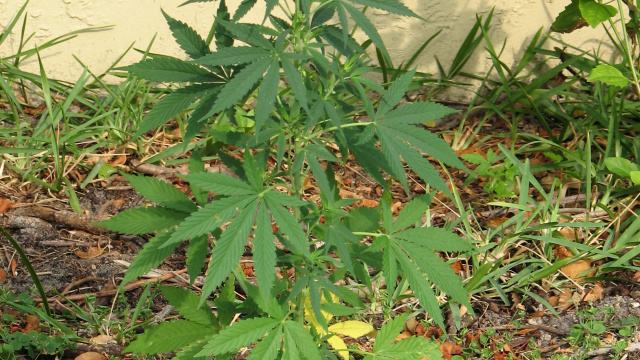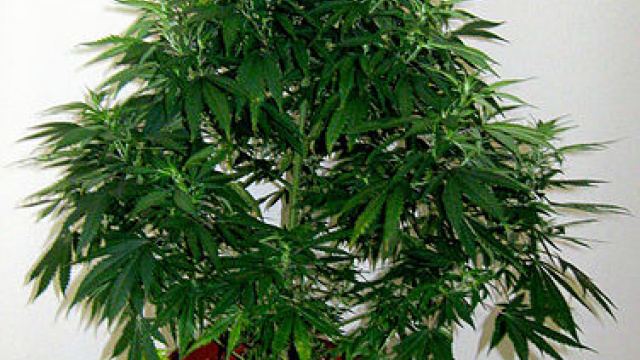 Ralph Miller was barely 30 years when he was hand-picked to lead a Canadian commission on whether marijuana should be legalized.
Ralph Miller was barely 30 years when he was hand-picked to lead a Canadian commission on whether marijuana should be legalized.
As research director, it was his job to guide a small army of scientists to investigate the nonmedicinal impact of a much-demonized drug during the late 1960s and early 1970s.
On May 29, 1969, then-prime minister Pierre Elliott Trudeau appointed Gerald Le Dain, a former dean of Osgoode Hall Law School and a future Supreme Court justice, to lead the inquiry. Le Dain hired the Miller — one of the few scientists who had a foot in both academia and the alternative culture. He was working at McMaster University at the time and had come to Canada a few years earlier from his native Detroit.
It has been described as one of the most comprehensive royal commissions ever conducted. The inquiry lasted almost four years. Nearly 30 public hearings took place across the country. Miller’s group oversaw 120 projects examining the physiological, psychological and behavioural effects of marijuana and other illegal drugs. They looked at extent and patterns of use, the social context of these drugs, how they played in mass media, legal and illegal sources of distribution, their role in law enforcement and the correctional system, among other things.
Around the same time, research funded by Ontario’s Conservative government was underway in Toronto to study the long-term effects of marijuana smoking in male and female volunteers. Dr. C.G. (Bill) Miles’ series of studies for the Addiction Research Foundation fed into the commission’s work though only portions of the results from the male studies were ever published.
By the time the commission issued its last of four reports in 1973, the perceived “drug crisis” in Canada was already waning. The commissioners were divided on whether pot should be legalized or decriminalized and much of the innovative research was left unanalyzed, according to Miller. The material was packed into boxes bound for the national archives. Miller says he would be willing to advise keen graduate students on how to start unpacking some of that rich data.
the Toronto Star spoke with Miller by email at an ashram in Rishikesh, India, and later by phone in West Vancouver, B.C., where he still consults on the impact of marijuana as well and holistic psychology.
“I have gotten a lot of mileage (kilometerage?) out of my Le Dain cannabis research,” he quipped by email.
Here is an edited transcript of his remarks on the collision of marijuana, science and politics from that time.
What prompted the commission?
“There was a lot of talk that drugs were destroying our youth, that hospitals were full of young people gone crazy on the use of drugs and that crime had gone up from drugs.
That was the crisis that caused Trudeau to say what is going on here.
All it was originally going to be was a departmental inquiry about marijuana issues. And then of course concern about LSD, psychedelics and so on.
At that point, coke hadn’t really reared its head in Canada much and heroin was entirely restricted to the West Coast.
Their great mistake, the Cabinet’s, is that they didn’t specifically exclude anything. They didn’t consider alcohol and tobacco to be drugs because in the general population it isn’t.
I made a point on logical grounds and in terms of physiological and socioeconomic effects, we had to include alcohol.
So the interim report did include alcohol, but not tobacco.
But I wrote all the tobacco stuff and stuffed it in the final report with only general approval at the end because they didn’t want to tackle that as well.
But when you look at the alcohol and drug research, it makes everything else a bad joke.
That’s why I quit working in the area.
They weren’t interested in the problem, in terms of the socio-economic impact of drugs, which means alcohol and tobacco. Added up, everything else is nothing compared to alcohol and tobacco problems.”
How did you land the job?
“They couldn’t find anyone in Canada qualified who also had a foot in the alternative culture.
I had given a talk on the non-medical use of drugs as part of a university conference. Le Dain heard about that and called me personally at McMaster to meet with him.
At that time, I had a giant Afro (dark brown, black) and had recently escaped from the U.S. to McMaster.
I purposely didn’t spiff myself up.
Le Dain himself was a conservative man, but brilliant, funny and intellectually honest.
I thought this was going to be just another government blah, blah, blah and I wasn’t really interested.
In my interview he never mentioned my hair.
Now my hair is trimmed up. I have my vice-president Biden hairdo on now.
No one else had ever been paid to work full time in these areas. Not only doing the original research, but surveying anyone who had ever done any LSD or any cannabis research. No one else had ever been in a position to do this before.
I was easily the world expert in cannabis.
What were some of the highlights of your research?
There were some amazing and funny things.
We got permission to use the RCMP airport at Rockcliffe. We wanted to see how fast stoners could drive around, what they would run over, if they could park.
That’s where the first driving studies were done.
We tested marijuana and alcohol on runways they weren’t using at the time.
We had regular stoners rating as high as they ever got and still driving around in the RCMP airport.
We did the first and only survey of every RCMP officer, went through all of their chemical analysis records in detail. And three months later, we had the meeting with the RCMP officers.
They were very embarrassed because they were expected to have all this data on marijuana and crime.
Other than busting people for simple possession and small dealers, they had nothing, except some guys who got busted for marijuana and were already under suspicion for gang rape a few weeks earlier. There was one case of a young man who turned out to be schizophrenic. He had taken hash and assaulted his parents. But it wasn’t clear it was even in the same month.
They said they were sure the world literature would support them, which it didn’t.
So that blew away the marijuana-causing-crime issue.
The LSD crimes were a young man naked worshipping the golden boy statue in front of the capitol building in Manitoba; some guys naked running through Stanley Park; and three people caught inappropriately dressed worshipping the trees in the park.
One of the crimes was he pulled into a gas station while high on LSD and tried to get them to service six imaginary automobiles. How’s that for heavy crime?
The worst one of all? A woman was caught attempting to fornicate with a peanut-vending machine.
The RCMP officers writing this down must have had a hoot but the head commissioners didn’t think this was funny at all. They were highly embarrassed.
We surveyed every psychiatric hospital and every hospital and major clinic with a psychiatric ward or outpatient clinic.
Physicians were seeing these kids coming in seeming schizy and that they were smoking dope and assumed that the families will want to blame something outside. Because it’s either the parenting or the outside. Because genetics is very hidden and not clearly known at that time.
In Ottawa, study, No difference between number of schizophrenics to be expected (1-3 per cent of population in age groups) and number being reported as being caused by marijuana/LSD. Which means marijuana or LSD was not likely causing anything but was maybe concomitant in increasing the symptoms.
The psych hospitals were full of people with alcohol problems. Again, alcohol wiped everything else off the map.
Was the drug crisis exaggerated?
“A general but not well-defined fear fed into “drug crisis.”
Many believed marijuana was a gateway drug. But in those days, few people smoked marijuana who didn’t start with tobacco.
I just gave a talk on that in India.”
Where did the pot for your research come from?
“A field run by the U.S. government in Kentucky. They collected seeds from around the world and were growing them in different conditions there.
Kentucky pot was a dark, rich green.”
What happened?
“We ran out of money and all of the studies we did — the pharmacology studies — were left only in the not-finished, final statistical analysis.
They didn’t come up with the money for a follow-up until all of my staff members had jobs elsewhere.
That was in 1973/74.
All of our core research, even the data, is in the national archives. Most is still in microfiche. And most of it hasn’t been published other than in the reports. Except the stuff that we involved outside people who had their own research grants from universities in California and around Ontario that published on their own.
But I couldn’t do it free.
I had my two kids. No access to staff or computers.
I was living in a wonderful commune in Stanley Park, Vancouver. I worked at a rehab program.
When the commission was over, Trudeau put the word out to the prosecutors and the whole judicial system and police to not waste time on simple possession.
Trudeau couldn’t do much with it. There wasn’t the political will around the country. They were still very conservative about it.
And here we are, a half-century later just about, and now the issue is coming around again. It’s about time.
I’ve been disappointed that no one seems to be tracking down any of us about the political, socio-economic issues.
Even young Trudeau himself seems to be dealing with these issues and doesn’t mention his dad’s commission at all.
He’s fishing around for answers and his dad’s commission did the work. And people don’t even seem to recognize it.”
What was your final conclusion?
“The big plague of stoners bringing Canada to its knees is a farce.”
Source: Toronto Star Newspapers Ltd.
Link: http://www.thestar.com/news/canada/2013/04/08/governments_research_on_marijuanas_effects_done_long_ago.html
Author:Diana Zlomislic



Leave a Reply